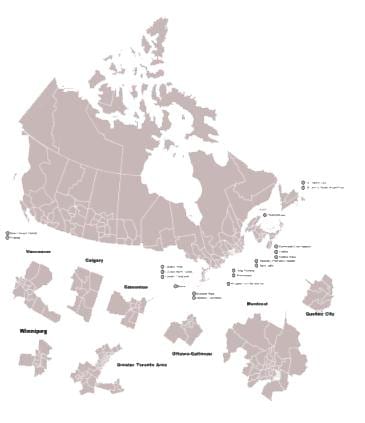The decennial riding redistribution kicked off this month, and with 30 additional seats being added to Parliament, it represents the single greatest change to representation in the House of Commons in more than 50 years.
Under a law passed in December, Ontario, Alberta, British Columbia and Quebec are receiving additional seats to account for population growth and their growing proportion of Canada’s population. Ontario gets 15 seats, Alberta and BC get six new seats each, and Quebec gets three additional seats.
With the Harper government holding a majority by just 11 seats, these new ridings could solidify or topple the Conservative regime in Canada.
At this stage of the process, three-member electoral boundary commissions have been established in each province and are soliciting input from citizens. The commissions will then table proposed changes to the riding boundaries in each province and will consider feedback before the new ridings become official.
At this point, no one can be certain where the new ridings will be located and how other riding boundaries will be changed. By law, ridings must be close in size by population but are allowed to vary by 25 percent from the average riding size. In Ontario, the average riding size after the new seats are added will be 106,213.
Using that number, Toronto is likely to receive one or two more seats – most likely in the fast-growing downtown core or central North York. Toronto Centre and Trinity-Spadina have populations of 130,000 and 144,000, according to the latest census numbers. Willowdale has 140,000 people.
If a new riding is added to downtown, it will be important to the queer community that the Village is kept intact in one riding.
Many of the new ridings are likely to be located in the 905 belt of Toronto suburbs. According to the last census, the surrounding municipalities have leapfrogged past Toronto and are now home to 50 percent more people than the Big Smoke. Ridings like Vaughan and Brampton West are now home to more than 200,000 people. In total, the 905 could be due for up to eight more seats.
While the Liberals were traditionally strong in these ridings, the Conservatives swept all but one during the last election.
The remaining new ridings could end up in the fast-growing cities of Ottawa, London and Kitchener-Waterloo, or in the large rural ridings of Southern and Eastern Ontario.
In Alberta and British Columbia, the story is similar. Calgary and Edmonton have some of Alberta’s largest ridings, while BC’s largest ridings are in Vancouver and its suburbs. BC could also see an additional riding in the Southern Interior and on Vancouver Island. Quebec’s new ridings will likely fall in the suburbs of Montreal.
New ridings in suburban areas present a double-edged sword to downtown communities: they reduce the relative power of communities in urban centres to promote policy, but they also strengthen the representation of city regions compared to more conservative rural areas.
Put another way, if a progressive coalition can be built across the GTA, it could control up to 60 of the new Parliament’s 338 seats – or 18 percent of Parliament.
Put another way, the 15 new seats Ontario is receiving will be more than the entire delegations of six provinces.
Combine this with 33 seats in greater Montreal, 23 in greater Vancouver, 11 in Ottawa, 11 in Calgary, 10 in Edmonton, seven in Winnipeg, and five in Quebec City, and Canada’s eight largest centres will control 47 percent of Parliament. That’s an opportunity for queer activists and progressives to band together for common power.


 Why you can trust Xtra
Why you can trust Xtra


